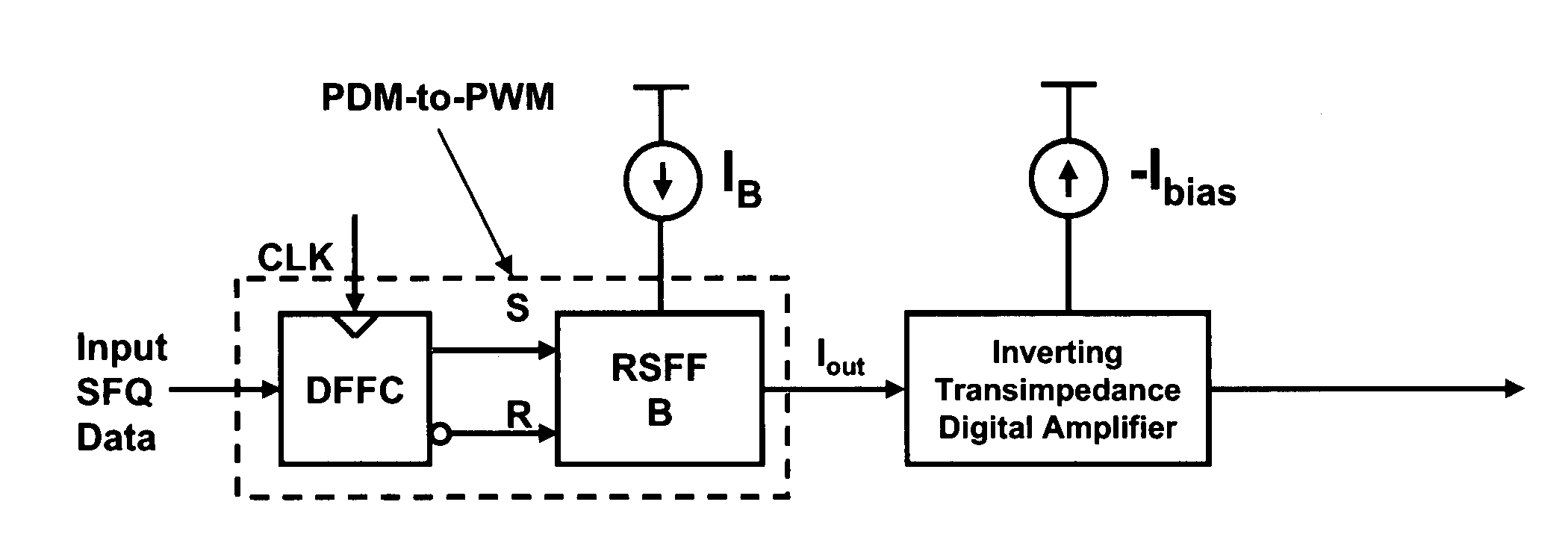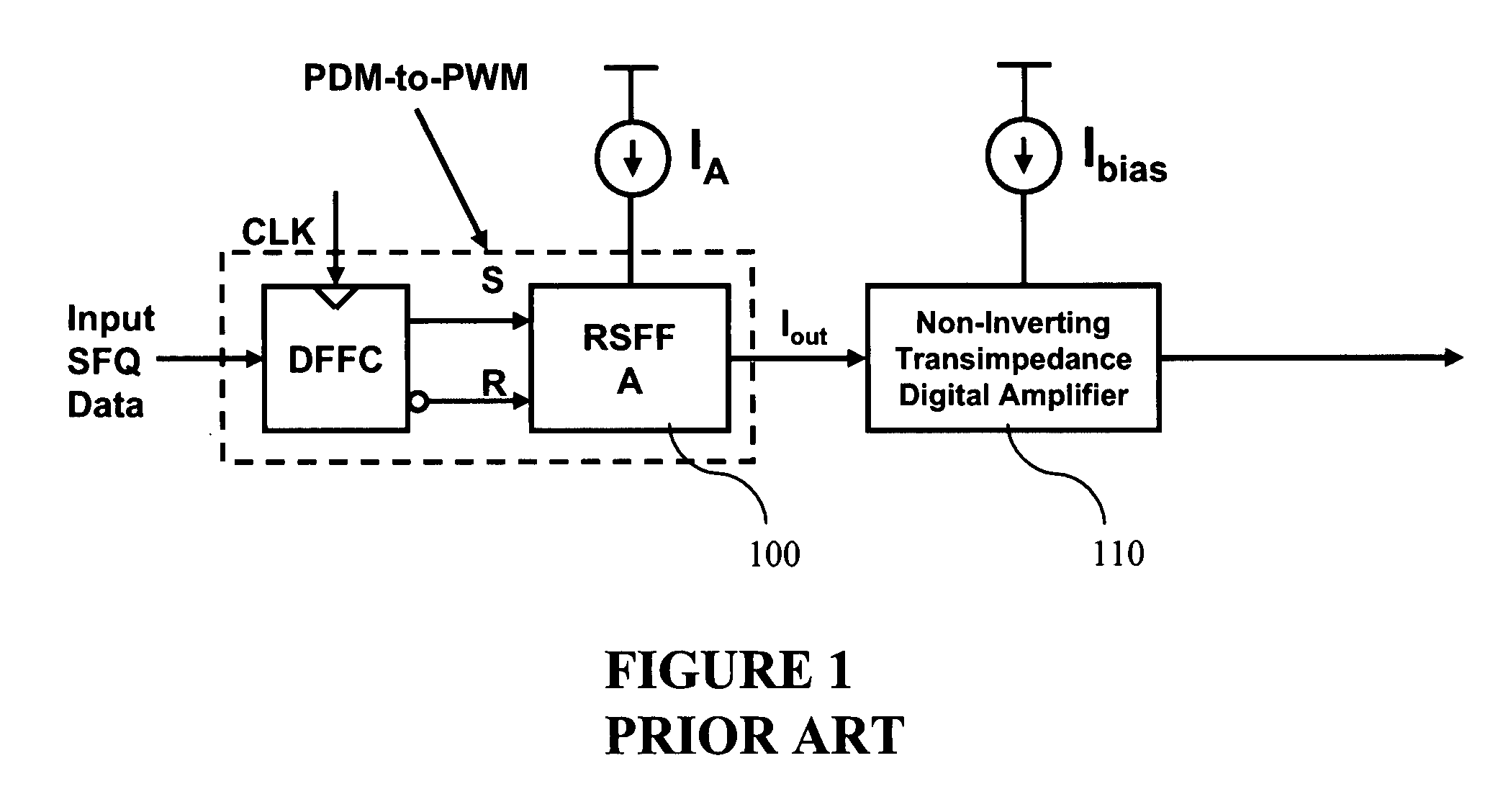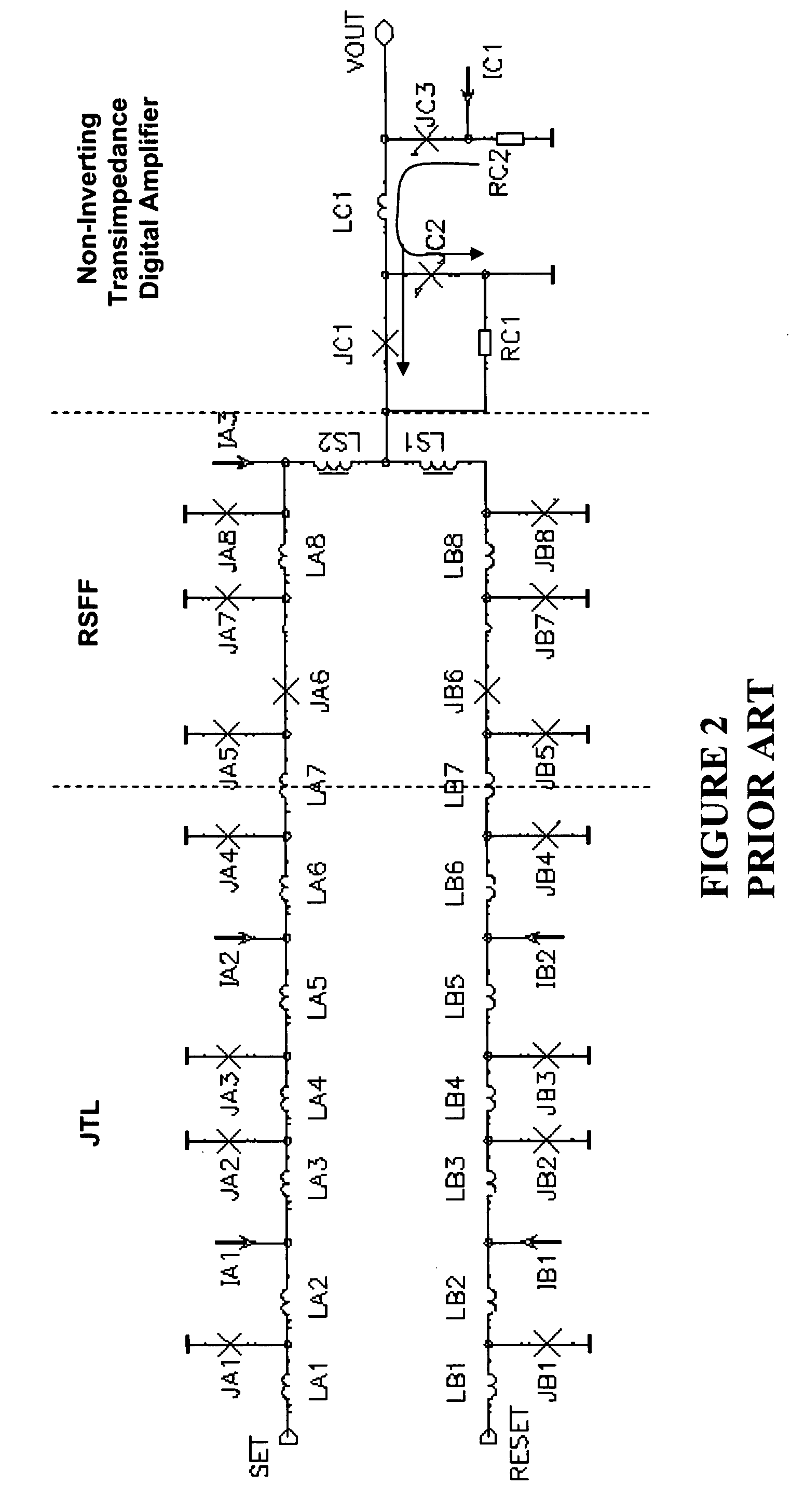Ultra fast differential transimpedance digital amplifier for superconducting circuits
a digital amplifier and superconducting circuit technology, applied in logic circuits, electronic switching, pulse techniques, etc., can solve the problems of propagation delay, significant difference in the time when one device response is compared to another, and the limit of the number of squids that can be reliably fabricated for series connection, etc., to achieve less power, less on the chip, and better fabrication yield
- Summary
- Abstract
- Description
- Claims
- Application Information
AI Technical Summary
Benefits of technology
Problems solved by technology
Method used
Image
Examples
Embodiment Construction
[0040]FIG. 1 is a block diagram of the non-inverting transimpedance digital amplifier which has been utilized in the prior art. Incoming data as received at the set (S) and reset (R) inputs of an RSFQ RS flip-flop 100 and the output pulse-width-modulated current are applied to the non-inverting transimpedance digital amplifier 110.
[0041]FIG. 2 is a schematic diagram of the prior art showing the interface between an RSFF and a non-inverting transimpedance digital amplifier shown in FIG. 1. Josephson transmission lines (JTL) are routinely used as interconnects between logic devices in RSFQ technology. Josephson junctions JA5-JA8 and JB5-JB8, LS1 and LS2 constitute an RS flip-flop which converts the pulse density modulated data stream received over the JTL into pulse-width-modulated current that drives the non-inverting transimpedance digital amplifier.
[0042]The PDM-to-PWM converter shown in FIG. 1 takes in SFQ (single flux quantum) pulses as control inputs (SET and RESET) and produces...
PUM
 Login to View More
Login to View More Abstract
Description
Claims
Application Information
 Login to View More
Login to View More - R&D
- Intellectual Property
- Life Sciences
- Materials
- Tech Scout
- Unparalleled Data Quality
- Higher Quality Content
- 60% Fewer Hallucinations
Browse by: Latest US Patents, China's latest patents, Technical Efficacy Thesaurus, Application Domain, Technology Topic, Popular Technical Reports.
© 2025 PatSnap. All rights reserved.Legal|Privacy policy|Modern Slavery Act Transparency Statement|Sitemap|About US| Contact US: help@patsnap.com



